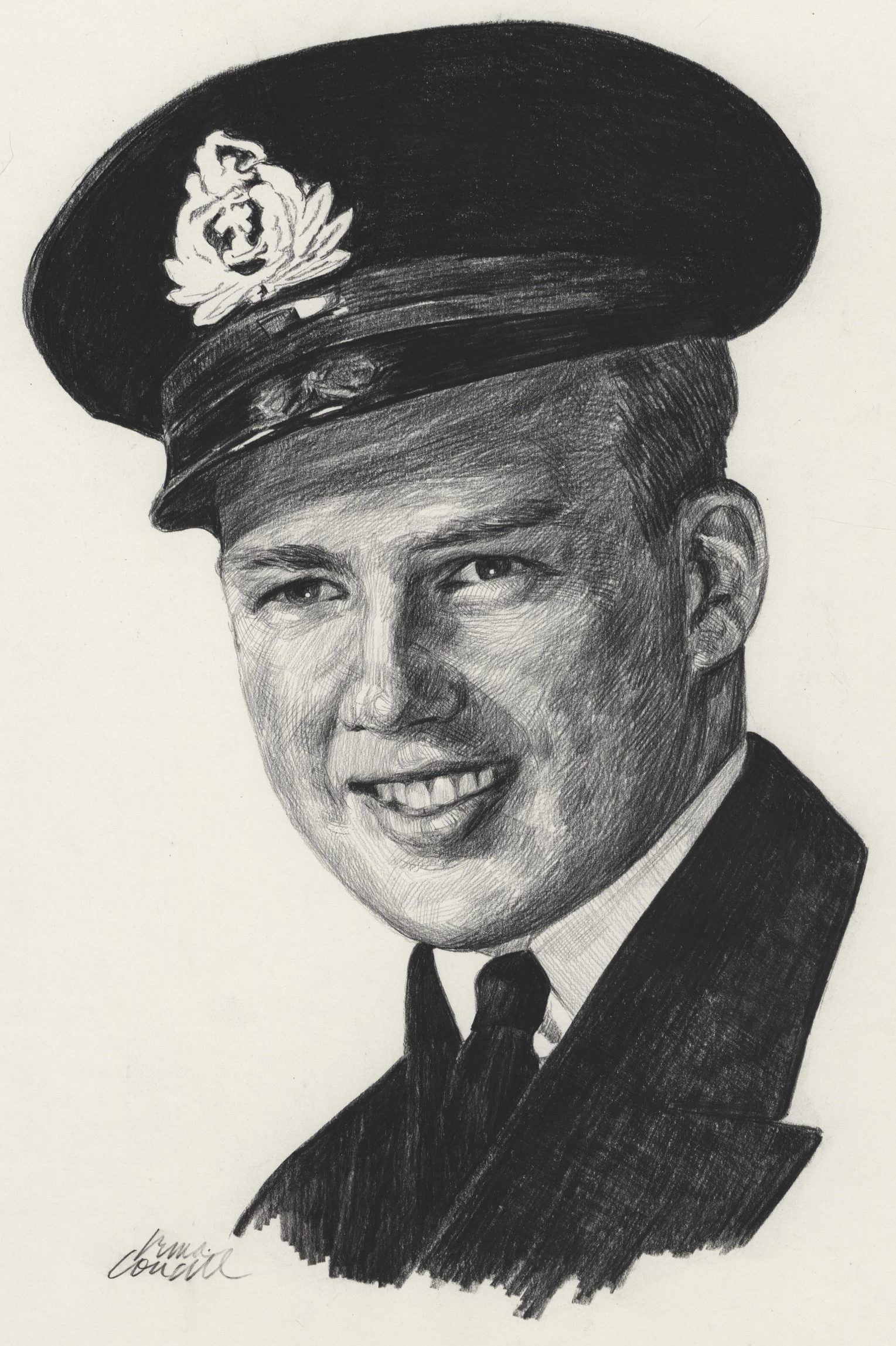Robert Hampton Gray

Birth Date: November 2, 1917
Birth Place: Trail, British Columbia
Death Date: August 9, 1945
Year Inducted: 1974
Awards: VC; DSC
His winning of the Victoria Cross in aerial combat must be regarded as one of the most outstanding contributions possible to the military aspect of Canadian aviation
The Royal Canadian Navy Volunteer Reserve (RCNVR)
Robert Hampton Gray, V.C., D.S.C., was born in Trail, British Columbia, on November 2, 1917, and received his early education at Nelson, British Columbia, graduating from high school there in 1936. The following year he enrolled at the University of British Columbia and had completed three years of an arts course by 1940 when he offered his services to the Royal Canadian Navy Volunteer Reserve (RCNVR).
After reporting to HMCS Stadacona, Halifax, Nova Scotia, Gray was sent, with the rank of Ordinary Seaman, to HMS Victory at Portsmouth, England, in September 1940. From there he reported to HMS St. Vincent at Gosport to train for his commission in the Fleet Air Arm. Following promotion to Sub-Lieutenant, RCNVR, in December 1940, he was given six months of operational training at Collins Bay, Kingston, Ontario. He returned to England to serve in No. 757 Squadron at Winchester and then sailed for a tour of duty in Kenya, where he was attached to Nos. 795, 803 and 877 Squadrons, part of the time being spent aboard HMS Illustrious.
HMS Formidable
Gray was promoted to Lieutenant in December 1942. In August of 1944 he joined 841 Squadron aboard the aircraft carrier HMS Formidable and on the 24th and 29th of that month led a section of Corsair fighters in attacks against heavy anti-aircraft positions surrounding Alten Fjord, Norway, where the German battleship, Tirpitz, lay at anchor. Returning from the raid on the 29th with most of his aircraft's rudder shot away and the aircraft badly damaged, he had to circle the Formidable for 45 minutes before making a successful landing. For these actions Lieutenant Gray was Mentioned in Despatches for undaunted courage, skill and determination.
Assigned to the British Pacific Fleet
HMS Formidable was detached from the Home Fleet and assigned to the British Pacific Fleet. Her aircraft took part in many strikes against the enemy in the Far East. By the middle of July 1945, the Japanese were receiving tremendous punishment in their homeland. On July 18th Gray led a flight of Corsairs on an airfield strafing raid. On the 24th and the 28th he was the leader of successful bombings of bases along the Japanese Inland Sea.
The Distinguished Service Cross
Twelve days after his death on August 9, 1945, he was awarded the Distinguished Service Cross (D.S.C.) for leadership in the July strikes, and was gazetted with a citation which simply read: "For determination and address in air attacks on targets in Japan." But on the morning of August 9th, as he led his Corsair bomber group away from HMS Formidable, Gray had no knowledge of the recommendation for the award. Nor did he know that just hours after this raid, a second atomic bomb would be dropped on a Japanese city (Nagasaki), and that the war would be over five days later.
The Victoria Cross
As the pilots approached the naval base at Onagawa Bay, they could see five Japanese warships at anchor. The combined anti-aircraft barrage from the ships and shore batteries steadily increased in intensity and accuracy. Selecting a ship, the Amakusa, Gray set his Corsair into a bombing attack. Gray's heavily damaged plane could not save him and it plunged into the waters of the Bay.
Lieutenant Gray was killed on August 9th, 1945, the last Canadian killed in action in World War II. He was awarded the Victoria Cross (V.C.), the only V.C. awarded to a pilot in the Royal Canadian Navy during World War II. The citation, published in the London Gazette of November 13, 1945, posthumously awarding him the highest decoration for gallantry, describes the incident and pays tribute to his steadfast conduct to the end. It reads:
"The King has been graciously pleased to approve the award of the Victoria Cross to the late Lieutenant Robert Hampton Gray, D.S.C., RCNVR, for great valor in leading an attack on a Japanese destroyer in Onagawa Wan on the 9th of August, 1945. In the face of fire from the shore batteries and a heavy concentration of fire from five warships, Lieutenant Gray pressed home his attack, flying low to ensure success and, although he was wounded and his aircraft in flames, he obtained at least one direct hit, sinking the destroyer. Lieutenant Gray has consistently shown a brilliant fighting spirit and most inspiring leadership."
Honoured and Remembered
He was 27 years old at the time of his death. A bronze bust of him stands in Ottawa’s ‘Sappers’ Bridge’ over the Rideau Canal, across the street from the Laurier Hotel. The pantheon of great Canadian Heroes known as Valliants. Next to him is the bust of another V.C. winner, Andrew Mynarski of the RCAF. The Valiants Memorial which stands near Ottawa’s Parliament Hill, is a collection of nine busts and a large bronze inscription that reads: “No day will ever erase you from the memory of time.” Robert Gray was the last Commonwealth Victoria Cross recipient.
In August 1989 a rock garden and memorial plaque were erected in Sakiyama Peace Park, overlooking Ongawa Bay on Northern Honshu Island, in honoured memory of Lieutenant Robert Hampton Gray. This memorial is the only one ever erected by the Japanese to an Allied officer of serviceman on Japanese soil.
Robert Hampton Gray was inducted as a Member of Canada's Aviation Hall of Fame in 1974 at a ceremony held in Edmonton, Alberta.
To return to the Inductee Page, please click here.
